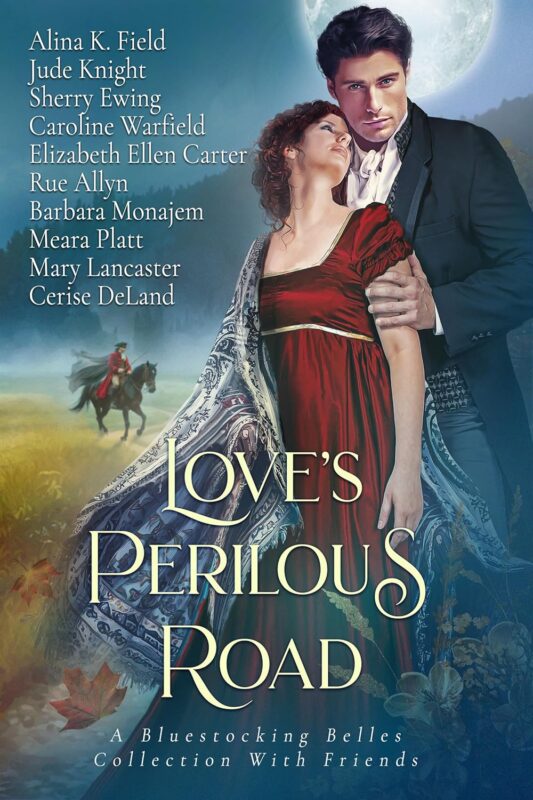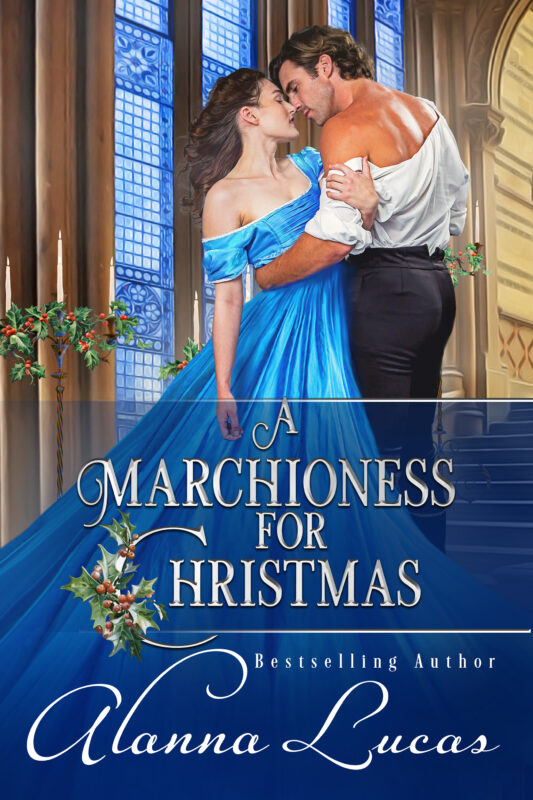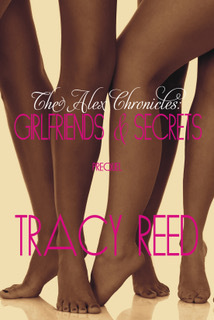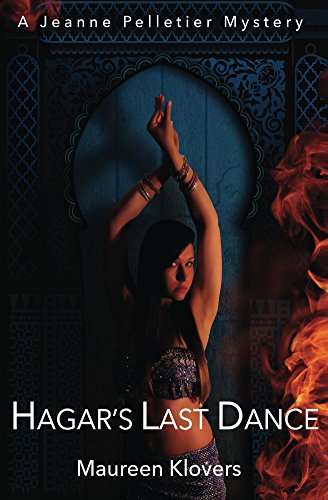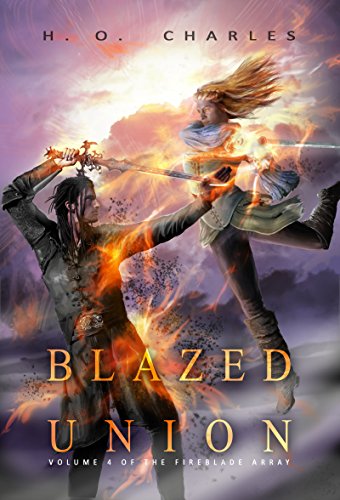MY UNROMANTIC HEART
February 15, 2020 by Rebecca Forster in category The Write Life by Rebecca Forster tagged as Craft, love, Love Inspired, romance genre, romance', romantic comedy, thrillers, writing process, Writing romance
By the time you read this it will be the day after Valentine’s Day, and I spent yesterday agonizing about what to write.
This angst over Valentine’s Day and romance is not unfounded. My first book was a romance. In Passion’s Defense was about a defense lawyer falling in love with a prosecutor during a gruesome trial. That should have been my first clue that perhaps mayhem rather than meet ups was my cup of tea. But I was slow on the uptake, and I wrote eight category romances. I think they are pretty darn good and they got better with each one. I wrote my heart out for Harlequin but I couldn’t seem to color in the lines, so I started writing women’s fiction. The editorial freedom, the more intricate plot lines, and the emphasis on plot rather than relationship helped me thrive. Dreams, Seasons, Vanities were just some of my titles. I wrote a lot of women’s fiction, but still I hadn’t hit my comfort zone as a writer. Then two things happened that sealed my fate.
First, the incredible RWA bookseller—Michelle Thorne—delicately informed me that my idea of romance was the hero chucking the heroine on the arm and giving her a smile. She was right. I was not a sexy writer in the years when other authors were pushing the envelope. My editor at Kensington was more direct. He said ‘You have to stop killing people before they get in bed!’. In essence he fired me from romance. I was devastated. Later I realized this was the silver lining in my very dark cloud.
When I started writing thrillers I found my passion and isn’t passion what love is all about? Still, without the learning curve of the romance genre, without the editors and readers, I wouldn’t have had the confidence to break up with women’s fiction as it was defined all those years ago and move on to my literary partner for life.
That doesn’t mean I left romance behind completely. Every book I write is based on relationships, but the emphasis of stories is little different from the classic romance novel. And then there’s my mom. One day she asked if I could write a book-without-bodies. I wrote three. On my mother’s ninetieth birthday, I presented her with a trilogy of sweet, romantic comedies: The Day Bailey Devlin’s Horoscope Came True, The Day Bailey Devlin Picked Up a Penny and the Day Bailey Devlin’s Ship Came in. These books encompassed every thing I love about romance: humor, honesty, confusion, honor, and affection for not just one man but all the men in Bailey’s life. Young or old, they be a lover or father or friend, it was all about love. I will always be most proud of, be in love with, the Bailey Devlin Trilogy because it reflects my definition of romance.
Today I put those three books in a boxed set and I hope when a reader finishes the stories, her (his) heart will be fuller, there might be a tear in her eye, she will have laughed out loud and then will turn around and pass all that feeling on to someone she loves.
Happy Belated Valentine’s Day.
0 0 Read moreTHE TRUTH ABOUT MUSES
May 15, 2019 by Rebecca Forster in category The Write Life by Rebecca Forster tagged as inspiration, writing, writing craft, writing life, writing process, writing tips
The other day I was musing about muses. This was a rather convoluted process that went something like this:
I want to write but I don’t have an idea. I should write, but I’m bummed because I don’t have an idea. I could write if I had a great idea. I need to get one and until I do, I’ll watch TV. There’s a movie on TV called The Muse. I’ll watch The Muse and get inspired.
This is how the musing went after the movie.
The Muse is awful. She’s demanding, self-centered, and doesn’t care about the writer’s work. Still, the he sees something in her. What does he see in her? I want a muse. I just don’t want a muse like that.
I turned off the TV, obsessed with the idea of getting a muse. I just had to figure out where to get one. Since I’d never actually seen a muse, I decided I better find out exactly what I was looking for.
In the dictionary, the first definition of muse is to be thrown into a deep state of dreamy abstraction. The second is a noun, naming any of the nine sister goddesses in Greek mythology that preside over song, poetry, the arts and sciences. The third definition is the one we think of most often, a human source of inspiration or a guiding genius.
With this information in hand, I analyzed my career and realized that a muse has guided me every step of the way. I have often found myself lost in a dream state inspired by another writer. Their work has more often than not sparked an idea for a book of my own or a shown me a new way of laying a story foundation or become a point of reference for an essential building block.
The second definition – the naming of the goddesses – is a matter of inspirational faith. I have always believed that there is ‘something’ hovering over artists that not only encourages the creative soul, but also gives it the courage needed to present its work to a critical public.
That brings us back to the movie and the third definition of muse: the source of inspiration that we can touch and talk to. For some people this is one person, for me it has been many. I don’t call them muses; I call them friends, lovers, family and colleagues. Each step of my career was inspired and moved forward by the muse of the moment, the one person I needed just then.
There was the high school teacher who told me I wrote well, my husband who rescued by early attempts from the trashcan, my children who proudly said their mom was a writer. As the years went on and the books piled up, there were editors who trained me and readers who cheered me on, inspiring me to be better at my craft. All these people were – as definition three would have us believe – guiding geniuses.
It doesn’t matter if they knew the roll they played in my writing. What matters is that I wrote because of them and never in spite of them. The truth is, all you have to do to find a muse is open your eyes, your mind, and your heart. That muse is there – sometimes where you least expect it.
0 0 Read moreSoftware Programs for Writers by Connie Vines
December 13, 2015 by A Slice of Orange in category Archives tagged as A Slice of Orange, Connie Vines, OCC Slice of Orange, publishing, Software Programs, writing processI also began to wonder exactly how many programs I used when writing, plotting my novels, balancing the reading levels for my YA stories, etc. I feel the content would be of interest to writer, readers, and those who man be looking for a program help them make it through the rigors of an AP, university level, or an extension class.
My go-to program is Power Structure purchased via Write-Brain.com. Since I work in segments: Chapter 1 – 3, etc. rather than scene-by-scene or chapter-by-chapter, this program is adaptable to my thought process. I am able to work in three Acts, Chapters, Scenes, or any structure model of preference.
Conflict, Subplot, plot point. You can also change almost any term used in Power Structure to suit your personal preference. Long ago attended a class held at OCC using a writer’s workbook written by Chris Vogler, a Hollywood screen writer, who uses Joseph Campbell’s “A Hero’s Journey” as a plotting bible. Since I have followed Joseph Campbell’s works and find the “A Hero’s Journey” the best way for me to write a story.
Beverly also mentioned Dramatica Pro. Pricey, yes. I believe for characterization, especially for detailed historical novels, or when writing a continuing series, this program was a good investment.
A Plot Progression Window allows me to examine where to place a pivotal point. There is also a Spin-the-Model Brainstorming option. This helps when, heaven forbid, I have writer’s block–and much, much less painful than pounding my forehead on mt desk until my muse comes up with a plan.
On my iPad I have several program: My Writing (which I seldom open), A Novel Idea (where I have grains of thoughts/names of future novels) this takes the place of scribbles from my lip liner on discarded pieces of paper I’d find in the depths of my tote bag. I Do Notepad & I Do Notepad Pro that I will use but it have a devil of a time retrieving what I have saved.
The Journal app is good for free-flowing thought/plotting etc. and also for using as a writer’s journal. You can create labels, change the font and even add a background picture. This is where I many place the notes from my character interviews.
FLOWERS IN THE ATTIC: A Terrifying Tale of Backlists
March 15, 2011 by A Slice of Orange in category Archives tagged as backlists, Digital only publishing, strategy, writing processOne of the strangest books ever written was Flowers in the Attic (V.C.Andrews). There is lots to talk about with this book (incest, misguided religiosity, family acceptance and love) but those are topics better left to a book group discussion.
What really terrified me was the premise of that book. A mother locks her kids in the attic and forgets about them. The children languish, nearly dying in that attic, until they rise up and confront her. They are no longer willing to be locked away. And that brings me to the topic of the day: books, backlists and half finished manuscripts locked in our creative attics.*
My friend and fellow author Brian Drake deals beautifully with the subject of discarded manuscripts and whether the are salvageable in his blog Bringing Back the Dead , so I would like to focus on the opportunities and challenges traditionally published authors face when dealing with their backlist.
My own career has been neatly split in two distinct genres: Romance/women’s fiction and legal thrillers/police procedurals. Over 26 years I had my rights reverted to all 23 of my novels as soon as I was contractually able. I had no idea then that rights reversion would turn out to be the smartest move I ever made. In control of my work, I was perfectly positioned to digitally publish, POD or self-publish my literary inventory. I chose to concentrate on digital publishing, taking advantage of the explosion of E-readers.It took a year to scan all my thrillers, create covers, edit for scanning errors, properly format and upload my 11 book backlist. The effort was worth it.
My faith in my thrillers has been rewarded by good sales, excellent reviews and a growing following. I realized, though, that I had the advantage of name recognition as my fan base moved from paper to IPads, Nooks and Kindles.Spurred on by this clear opportunity, it seemed logical to follow the same strategy with my early books (romance and single title contemporary women’s fiction). Yet when I went to my literary ‘attic’ and opened the door I didn’t exactly find my ‘flowers’ in full bloom.
The truth was that some of my work should not be resurrected. The very first book I wrote was creatively tentative, predictable and descriptively overwrought. This was a far cry from the intricately plotted books I penned later in my career. In short, it was clear I had learned a lot between the first book and the last. I tried to convince myself the craft didn’t matter. Books were books and someone would like these. But I also realized many more people would be put off by these early efforts. That would impact both my reputation and my sales. I might never be able to convince those readers to give me another chance. When I weighed the pros and cons it came down to this: would I be proud to have these first books in the hands of an avid reader? For three books, the answer was no.
I want to make it perfectly clear, I am not ashamed of anything I have written. All my books were published by respected New York publishers. Each represents my best effort at that stage of my career but some of those books are not representative of the author I have become. When a reader chooses to sample my early work, I want them to hear my unique voice (I had no POV in the three I will not re-publish). I want the reader to be engaged in a multi-layered story (my early work is linear). I want a reader to get to know well-drawn characters that live in a complete universe (my early characters were two dimensional and their universe limited).
In my memory, I believed my attic was full of fabulous books; in reality, I had stored away my building blocks. I am wise enough now to recognize that the reader’s experience is more important than my ego. Just because I wrote a book twenty years ago does not make the work viable today unless it clearly shows emerging strengths. If I republish my initial stumbling as I tried to find my literary feet, I run the risk of alienating a reader rather than piquing their curiosity. I want each book to show how I have grown as a writer. Bottom line, if any of my work might waste a reader’s time or money it should be set aside.
So, as much as it pains me to admit it, as hard as it is to close that door, there are some flowers that need to stay in my attic. I am ever so grateful that they are there to remind me of where I’ve been, how far I’ve come and that writing is hard work. I might visit them once in a while but, like V.C. Andrews has shown me, sometimes there are reasons you need to lock the door and walk away.
*These thoughts can be applied to any creative effort: painting to pottery, music to manufacturing.
1 0 Read more9 to 5: Love, Danger and Romance for the 21st century heroine
February 11, 2011 by A Slice of Orange in category Archives tagged as 9 to 5, blogging, books, Confessions of a Podcast Goddess, danger, dangerous, job, professions, romance novels, writing, writing process, writngMeet EVELYN Q. DARLING, Romance Reporter at Large, in her first blog today:
In the past, creating a job for a romantic heroine usually meant she was either a governess, a nurse, or in the early twentieth century, a “typewriter,†better known as a secretary.
Take a letter, Miss Jones…
To all writers of romance novels.
Dear Miss, Ms. or Madam:
It has come to this reporter’s attention that several of you have veered away from writing about governesses in dark, gloomy manor houses and pert, red-cheeked nurses and turned to writing about heroines who carry guns, sport black leather and can take a man down in fifty seconds flat.
Really.
What happened to the days when all a heroine had to do to get her man was flutter her black lace fan and bat her soot-caked eyelashes? (Ample cleavage didn’t hurt either.)
It was so much easier when all a writer had to worry about was how many flounces graced her heroine’s gown or the number of hooks on a corset. (A heroine’s age at marriage also determined the size of her waist: if she wed at 18, she aspired that her waist remained at 18 inches.)
And if all else failed, there was always the “smart†heroine who wrote novels, solved mysteries or planted her delicate boots on foreign soil and showed her moxie by becoming a globe-trotting adventuress.
Sigh. Ah, for the good ole days before our heroines decided they wanted equal rights between the sheets. And on the job.
Now to create the modern heroine, a romance writer has to know the difference between a Glock and a Sig Sauer (the latter sounds like a deli sandwich).
Be able to “street speak†in urban fantasies, suck blood without smudging her lipstick in vampire thrillers and shape-shift into an exotic creature with all her parts intact.
So I’m asking all you romance writers to drop me a line and tell me what “dangerous professions†for a heroine you’ve seen in recent novels or in a novel you’re writing.
What’s new for a heroine in the 21st century in the world of “9 to 5†that you haven’t seen or written about before?
I’ll be eagerly awaiting your answers.
Who knows?
Maybe we can start a new trend: Dangerous heroines in tight corsets and red high heels who live in an abandoned subway tunnel and belong to a secret society of lusty Victorian vampires who feed on handsome firefighters.
Then again, maybe not.
Best regards,
Evelyn Q. Darling
Romance Reporter At Large
The Blonde Samurai: “She embraced the way of the warrior. Two swords. Two loves.â€
Jina Bacarr is also the author of The Blonde Geisha ,Cleopatra’s Perfume, Naughty Paris, Tokyo Rendezvous, a Spice Brief, and Spies, Lies & Naked Thighs
visit my website: http://www.jinabacarr.com/
Affiliate Links
A Slice of Orange is an affiliate with some of the booksellers listed on this website, including Barnes & Nobel, Books A Million, iBooks, Kobo, and Smashwords. This means A Slice of Orange may earn a small advertising fee from sales made through the links used on this website. There are reminders of these affiliate links on the pages for individual books.
Search A Slice of Orange
Find a Column
Archives
Featured Books
LOVE’S PERILOUS ROAD
Travel, houseparties, smugglers, spies--and a mysterious highwayman. Who is the infamous Captain Moonlight? And how many lives will he change—for good or for ill?
More info →
A MARCHIONESS FOR CHRISTMAS
Will Antonia be forced to endure yet another bleak midwinter?
More info →GIRLFRIENDS & SECRETS
Alexandra “Alex” Miller and her best friends are more like sisters. They live by the code that a good girlfriend will stick by you and be honest with you not matter what.
More info →HAGAR’S LAST DANCE
By day, Jeanne Pelletier is a small-town girl toiling in obscurity at a stuffy Washington, D.C., law firm; by night, she’s Zahira, the city’s newest belly dancing sensation.
More info →BLAZED UNION
Fate has other plans for those with fire and fury in their hearts.
More info →Newsletter
Contributing Authors
Search A Slice of Orange
Find a Column
Archives
Authors in the Bookstore
- A. E. Decker
- A. J. Scudiere
- A.J. Sidransky
- A.M. Roark
- Abby Collette
- Alanna Lucus
- Albert Marrin
- Alice Duncan
- Alina K. Field
- Alison Green Myers
- Andi Lawrencovna
- Andrew C Raiford
- Angela Pryce
- Aviva Vaughn
- Barbara Ankrum
- Bethlehem Writers Group, LLC
- Carol L. Wright
- Celeste Barclay
- Christina Alexandra
- Christopher D. Ochs
- Claire Davon
- Claire Naden
- Courtnee Turner Hoyle
- Courtney Annicchiarico
- D. Lieber
- Daniel V. Meier Jr.
- Debra Dixon
- Debra H. Goldstein
- Debra Holland
- Dee Ann Palmer
- Denise M. Colby
- Diane Benefiel
- Diane Sismour
- Dianna Sinovic
- DT Krippene
- E.B. Dawson
- Emilie Dallaire
- Emily Brightwell
- Emily PW Murphy
- Fae Rowen
- Faith L. Justice
- Frances Amati
- Geralyn Corcillo
- Glynnis Campbell
- Greg Jolley
- H. O. Charles
- Jaclyn Roché
- Jacqueline Diamond
- Janet Lynn and Will Zeilinger
- Jaya Mehta
- Jeannine Atkins
- Jeff Baird
- Jenna Barwin
- Jenne Kern
- Jennifer D. Bokal
- Jennifer Lyon
- Jerome W. McFadden
- Jill Piscitello
- Jina Bacarr
- Jo A. Hiestand
- Jodi Bogert
- Jolina Petersheim
- Jonathan Maberry
- Joy Allyson
- Judy Duarte
- Justin Murphy
- Justine Davis
- Kat Martin
- Kidd Wadsworth
- Kitty Bucholtz
- Kristy Tate
- Larry Deibert
- Larry Hamilton
- Laura Drake
- Laurie Stevens
- Leslie Knowles
- Li-Ying Lundquist
- Linda Carroll-Bradd
- Linda Lappin
- Linda McLaughlin
- Linda O. Johnston
- Lisa Preston
- Lolo Paige
- Loran Holt
- Lynette M. Burrows
- Lyssa Kay Adams
- Madeline Ash
- Margarita Engle
- Marguerite Quantaine
- Marianne H. Donley
- Mary Castillo
- Maureen Klovers
- Megan Haskell
- Melanie Waterbury
- Melisa Rivero
- Melissa Chambers
- Melodie Winawer
- Meriam Wilhelm
- Mikel J. Wilson
- Mindy Neff
- Monica McCabe
- Nancy Brashear
- Neetu Malik
- Nikki Prince
- Once Upon Anthologies
- Paula Gail Benson
- Penny Reid
- Peter J Barbour
- Priscilla Oliveras
- R. H. Kohno
- Rachel Hailey
- Ralph Hieb
- Ramcy Diek
- Ransom Stephens
- Rebecca Forster
- Renae Wrich
- Roxy Matthews
- Ryder Hunte Clancy
- Sally Paradysz
- Sheila Colón-Bagley
- Simone de Muñoz
- Sophie Barnes
- Susan Kaye Quinn
- Susan Lynn Meyer
- Susan Squires
- T. D. Fox
- Tara C. Allred
- Tara Lain
- Tari Lynn Jewett
- Terri Osburn
- Tracy Reed
- Vera Jane Cook
- Vicki Crum
- Writing Something Romantic
Affiliate Links
A Slice of Orange is an affiliate with some of the booksellers listed on this website, including Barnes & Nobel, Books A Million, iBooks, Kobo, and Smashwords. This means A Slice of Orange may earn a small advertising fee from sales made through the links used on this website. There are reminders of these affiliate links on the pages for individual books.
















